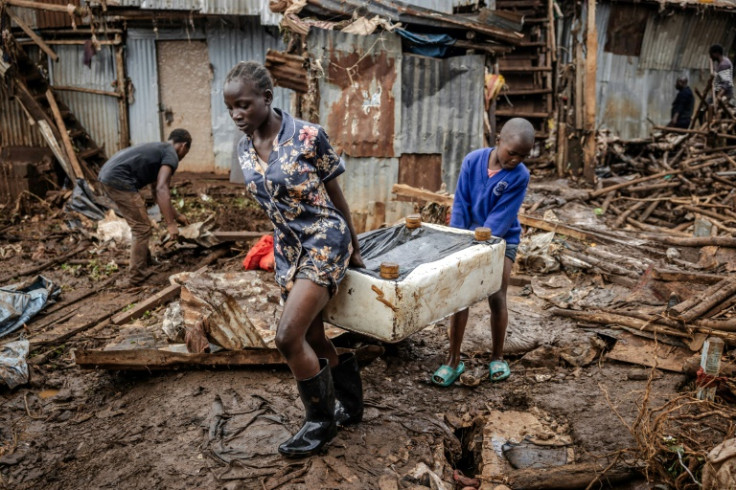
Seventy-six people in Kenya have lost their lives to floods triggered by torrential monsoon downpours since March, the government said Saturday, warning residents "to brace for even heavier rainfall".
Kenya and its East African neighbours have been battered by stronger than usual rain in recent weeks, compounded by the El Nino weather pattern.
Flash floods have submerged roads and neighbourhoods, leading to the displacement of more than 130,000 people across 24,000 households, many of them in the capital Nairobi, government spokesman Isaac Mwaura said Saturday.
"We deeply regret to announce the tragic loss of an additional six lives in the last 12 hours bringing the total to 76," he said, adding that 29 Kenyans had suffered injuries and 19 been reported missing.
"Nairobi is currently experiencing the highest impact, with a significant death toll of 32 and 16,909 households displaced."
Mwaura said all five dams comprising the Seven Forks hydropower project along the Tana river, Kenya's longest, were at total capacity.
"There is a prediction of a massive overflow downstream within the next 24 hours. Residents in these areas are advised to move to higher grounds," he said.
The monsoons have wreaked havoc across neighbouring Tanzania as well, with at least 155 people killed in flooding and landslides.
"The situation here is really scary," said Khatibu Kapara, a resident of Dar es Salaam's Jangwani neighbourhood.
"Many people including myself have been affected by floods. Many people have lost their property due to floods, their houses have been surrounded" by water, the 35-year-old told AFP.
In Burundi, one of the poorest countries on the planet, around 96,000 people have been displaced by months of relentless rains, the United Nations and the government said this month.
Uganda has also suffered heavy storms that have caused riverbanks to burst, with two deaths confirmed and several hundred villagers displaced.
El Nino is a naturally occurring climate pattern typically associated with increased heat worldwide, leading to drought in some parts of the world and heavy rains elsewhere.
The UN's World Meteorological Organization said in March that the latest El Nino is one of the five strongest ever recorded.








